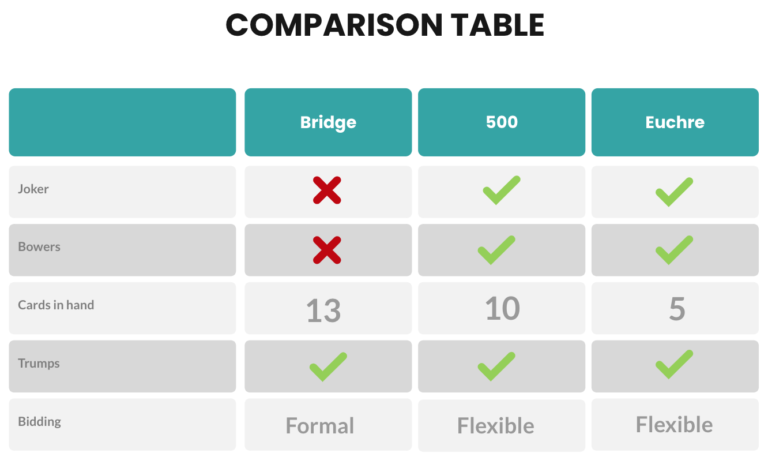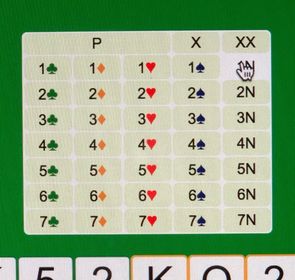015-019: Absolute Beginners - Play and Learn
017 – Play Your Second Bridge Game With Us
Bridge vs Other Card Games
This is your second lesson, and we know you want to play, so you at the end of this lesson, you will play another game.
The bidding and the play
If you’ve already played Euchre, 500 or Whist, then the play phase will be very familiar: follow suit if you can, or, if it is a trumpA suit of cards with the highest ranking over the other suits in a particular hand
Noun usage – A card in the trump suit whose trick-taking power is greater than any other suit card.
Verb usage – To play a trump after a plain suit has been led or otherwi… More contractThe final suit and level of bidding sets the number of tricks and the trump suit for the game.This is called the contract. The partnership that wins the bidding can earn the points if they succeed in getting the number of tricks they contracted.
The number … More, you can play a trump suitThe suit of cards with the highest ranking over the other suits in a particular hand
Usage – A card in the trump suit whose trick-taking power is greater than any other suit card.
In bridge the trump suit is determined by highest bid that wins the contra… More.
Cards and hands
There are no Bowers in Bridge, and you will be playing with a full deck of 52 cards, with each player having 13 cards in their hand.

Use the hints to bid
While the ‘play’ phase may feel familiar, the ‘bidding’ phase in Bridge is very different. BiddingThis term is also called the ‘auction.’ In each online deal, a player is the nominated as the dealer -this title rotates each new game. The dealer is the player who starts the bidding even if its a pass. Players take their turn at bidding in turn and in order … More in Bridge is very formalized with a large number of rules. However, when playing online here, you’ll be able to use the built-in help to help you bid. In these early lessons, we recommend you always follow the bidding recommendations. These early lessons will focus on helping to to play better so you can play Bridge online here as quickly as possible.
Your turn to bid
When it is your turn to bid, click on the ‘?’ beneath your cards (SOUTH) to find out what your bid should be. The recommended bid appears below your cards. In the example below, the recommended bid is ‘1NT’ (one notrumpA bid to play a hand without a trump suit where the highest card played to the suit first led to the trick – wins. This bid is peculiar to Bridge More) so you would click ‘1NT’ on the bidding pad. You can even see the reason for your partner or opposition bids by clicking on their bids.
The bidding hints are even available in our daily bridge competitions, so after a few short lessons, you’ll be playing competitively in our online Bridge game competitions.



In the next lesson we look at the Bidding in more detail, but first try the instant quiz and game below.

I should have made the 1NT but did not twice… my bidding is decent…play- not so much.
I can only make book. Some help with play would be helpful please
Please show me how to make this 1nt with these cards
It would be nice to see how to play it, to make the contract.
Done
I cannot go back to the lesson when i press return to lesson
Can you tell me more about this please because I just tested it on my computer and it worked for me
I am a novice so started with lesson 15. Yes made I NT, but when I tried to click on the ‘Back to lesson’ link- it did not work. Is it possible to fix this?
Thank you for this, I will check it out 😉
The ‘Back to Lesson’ link is now working
Fun! Love playing the same hand over and over